Over the last decade, humanity’s emissions of carbon dioxide (CO₂) have stabilised after a period of huge growth. Average growth is now down to just 0.6% per year, compared to 2% per year in the previous decade. But levelling off isn’t the same as declining – and we’ve levelled off at a very high rate of emissions. The Global Carbon Project estimates human activities released a record high of 10.2 gigatonnes of carbon (GtC) in 2024.
Last year, the atmosphere’s concentration of CO₂ rose at the fastest rate on record. Over the last decade, atmospheric CO₂ increased an average of 2.4 parts per million (ppm) a year. But last year, concentrations jumped by 3.5 ppm, reaching 424 ppm in the atmosphere. These concentrations are more than 50% higher than the pre-industrial period.
While we’re burning more fossil fuels than ever, recent emissions growth has been offset by falling rates of deforestation and other land use emissions.
Why are CO₂ concentrations still rapidly increasing? We’re still pumping massive amounts of long-buried CO₂ into our atmosphere. The only way for this carbon to leave the atmosphere is through natural carbon sinks – and they’re struggling to keep up.
How do we know the amount of CO₂ in the atmosphere?
Perched on a remote and windy clifftop on Tasmania’s northwest tip lies the Kennaook/Cape Grim Baseline Air Pollution Station. This station has an important job: monitoring baseline changes in atmospheric gases. The location was chosen because air here has travelled hundreds of kilometres over the ocean in an area unaffected by local pollution.
Issy Borley, CC BY-NC-ND
For decades, Australian scientists have directly measured the changes to the atmosphere here. Alongside other monitoring stations worldwide, this gives us an accurate and precise record of changes in greenhouse gases and ozone depleting chemicals in the atmosphere.
Filling the bathtub
Carbon dioxide is very good at trapping heat. Over the Earth’s 4.5 billion years, pulses of CO₂ have created hothouse worlds, very different to the pleasant climate humans have enjoyed since the last ice age, about 11,000 years ago. The last time CO₂ went past 400 ppm was likely more than two million years ago.
It’s easy to confuse CO₂ emissions and concentrations of CO₂ in the atmosphere. Emissions influence atmospheric concentrations, but they are not the same.
Releasing long-buried carbon back into the atmosphere by burning fossil fuels and producing CO₂ emissions is like turning on the tap in a bathtub and the amount of water in the tub is the atmospheric concentration.
The Earth has natural ways of dealing with carbon dioxide. Plants, soils and oceans are carbon “sinks” – they all draw down carbon from the atmosphere and store it. Think of them as the bath’s plughole.
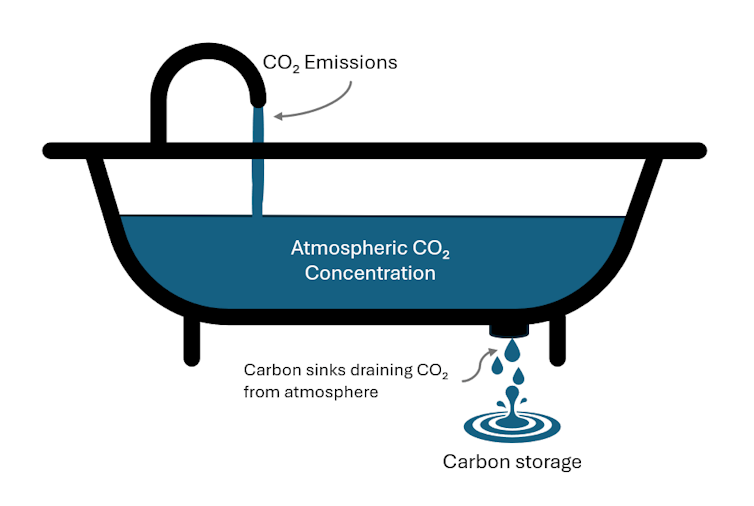
Issy Borley, CC BY-NC-ND
The problem is, we’re filling up the tub with CO₂ much faster than the Earth’s carbon sinks can pull them out. As a result, CO₂ concentration in the atmosphere rises. Atmospheric CO₂ matters because it is what actually influences climate.
If we apply current global emissions and scenarios where emissions decrease either steadily or rapidly to the CSIRO Simple Carbon-Climate Model, we can estimate how much our bathtub is likely to fill. These graphs show emissions must be significantly cut before we can start to see a fall in atmospheric concentration.
Why did CO₂ concentration jump last year?
The single largest influence in last year’s spike in CO₂ concentration is likely to be changes to carbon sinks.
Every year, oceans, forests and soils absorb about half the emissions humans produce. But this figure isn’t set – it changes as the Earth’s systems change.
For instance, plants grow more in wetter years and store more carbon in their structures through photosynthesis and growth.
But climate change is making fires more intense and more frequent. As trees burn, they release stored carbon back to the atmosphere. Emissions from enormous wildfires in Canada in 2023 and South America in 2024 likely contributed to the atmospheric CO₂ jump.
Recent research suggests a weakened biosphere has strongly contributed. Severe droughts across the northern hemisphere in 2024 cut the ability of the planet’s soils and plant life to soak up and store CO₂.
The speed at which carbon sinks soak up CO₂ depends on environmental conditions, which are largely out of our control. As climate change worsens, the capacity of natural carbon sinks to draw down our emissions will likely reduce.
In the bathtub analogy, water leaves the tub through the plughole. If the plughole narrows, less water can escape and our tub will fill up even faster.
The main lever we can control is the tap on the bathtub – the emissions we produce. Many nations are now cutting their emissions, but not enough to begin the sharp decline in concentration we need.
In the 1980s, the Earth’s thin, protective layer of ozone – just 10 parts per million – was being eaten away by chlorofluorocarbons (CFCs) and other chemicals in fridges, air conditioners and aerosol cans. Nations replaced these chemicals and the ozone hole began to close. Fossil fuels are far more important to our current way of life than CFCs were. But we now have good options to replace them across many industries.
This is a crucial moment. Our current rate of emissions will only cause CO₂ concentrations and global temperatures to rise. Natural carbon sinks will not pull out enough carbon to stabilise our climate on a time frame meaningful to humans. The earlier the action and decrease in emissions, the better our future.

The post “Even as emissions level off, carbon dioxide in the atmosphere is growing faster than ever. Here’s why” by Issy Borley, Research Technician, CSIRO was published on 05/08/2025 by theconversation.com







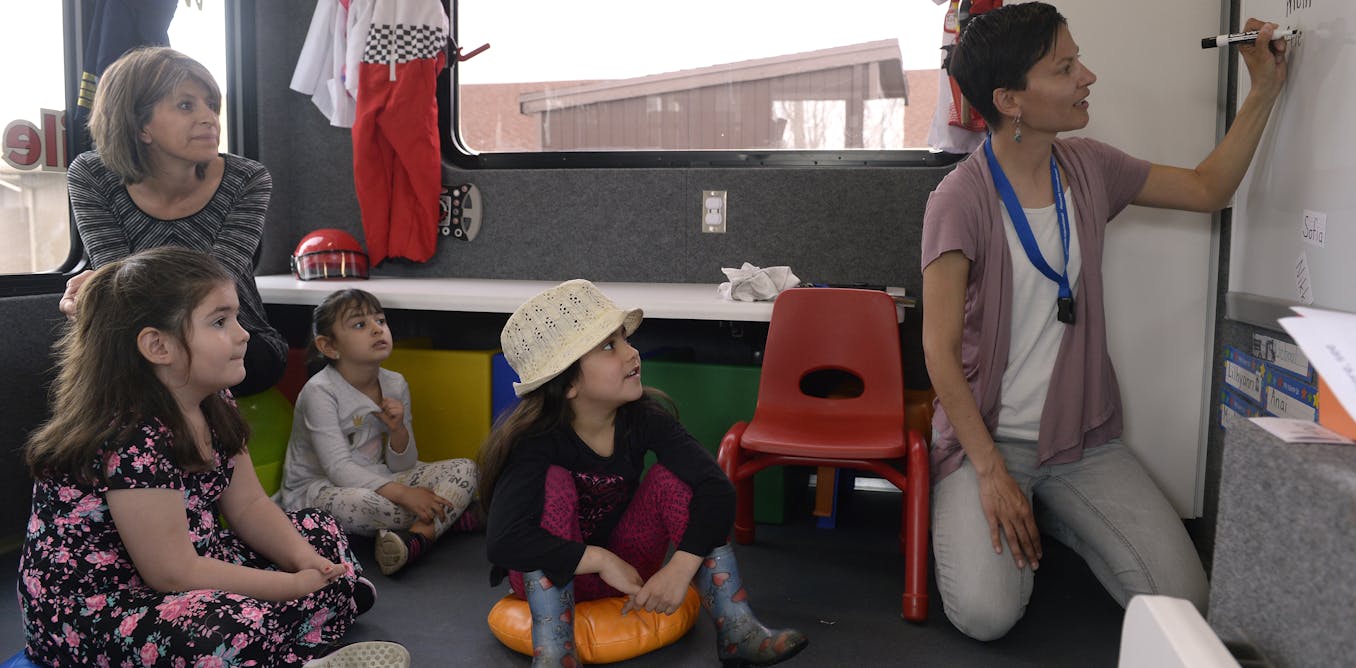





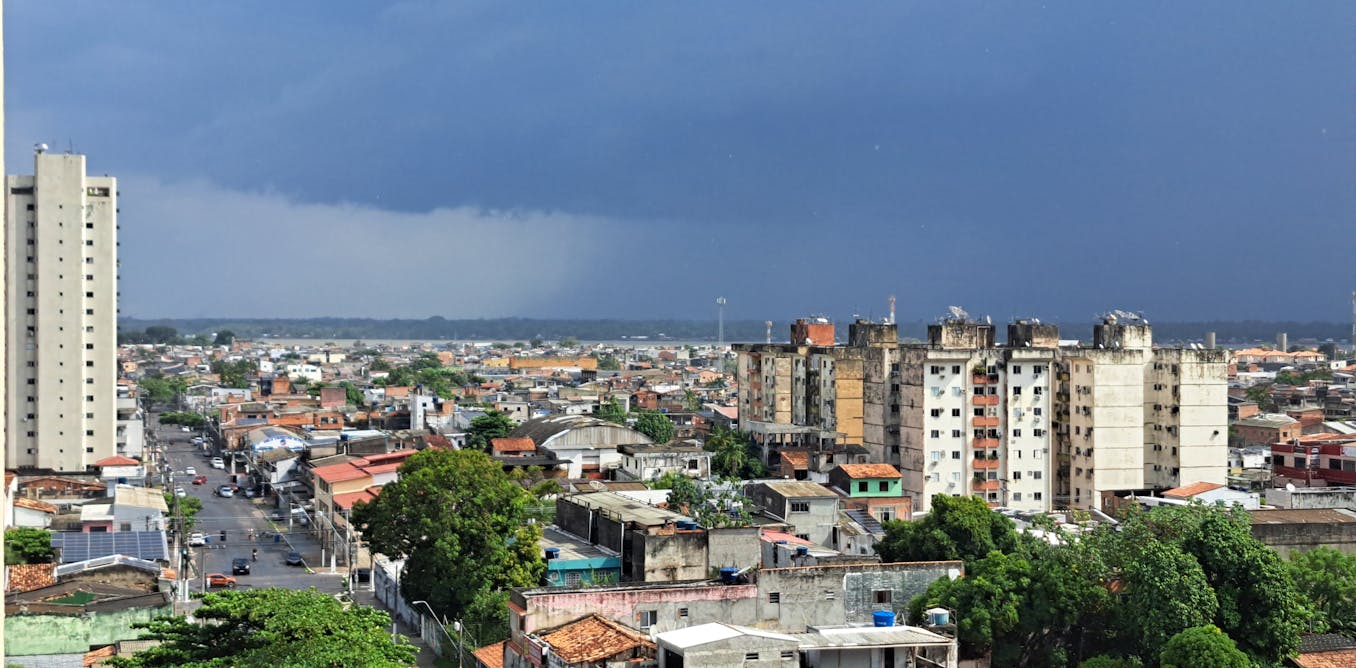
















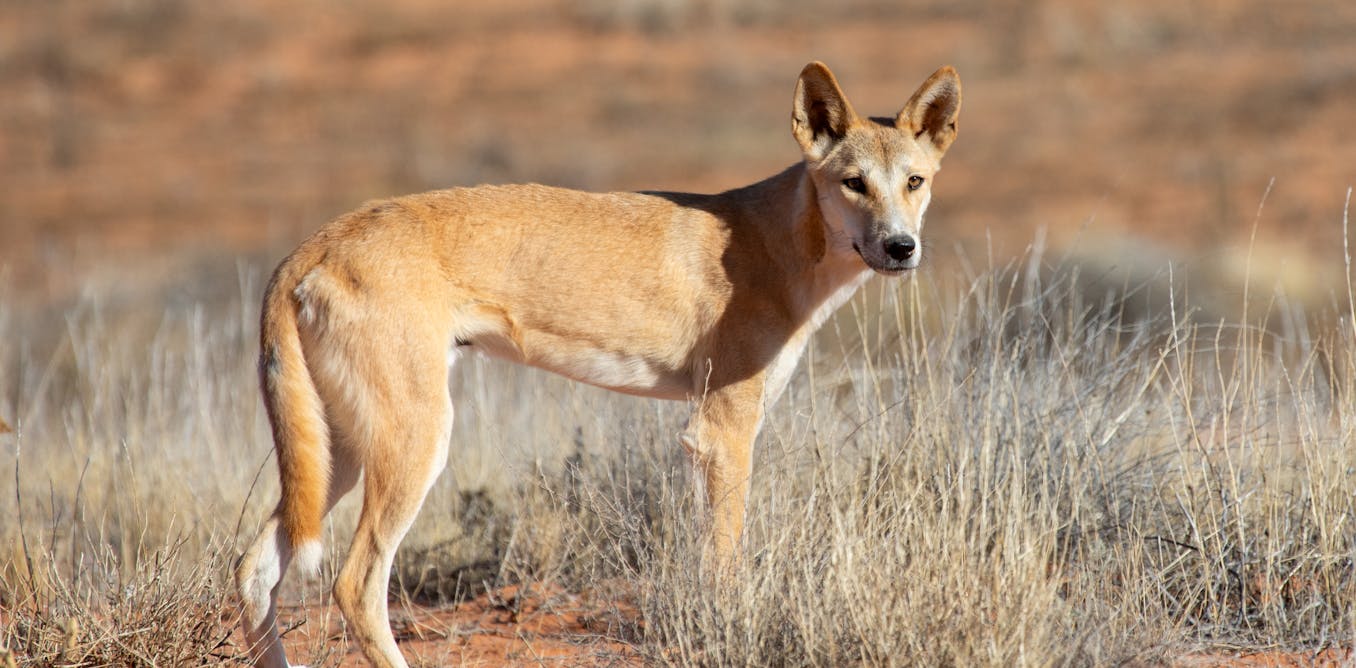

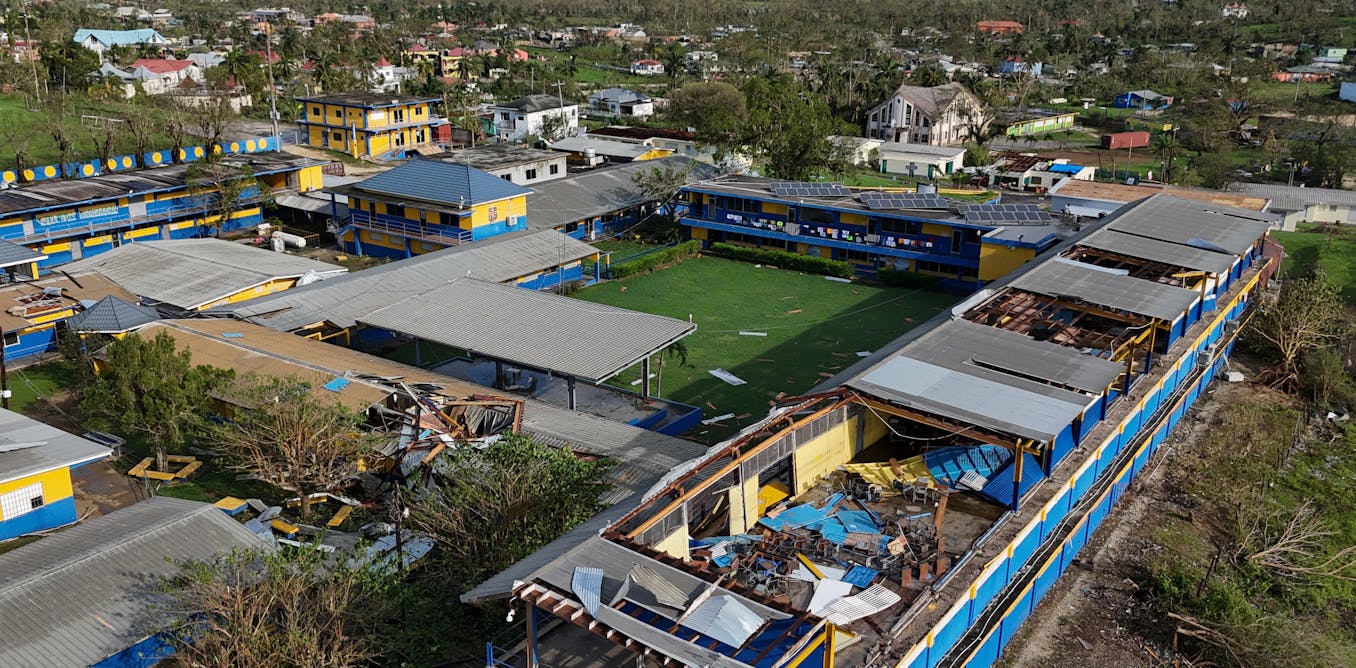

Leave a Reply